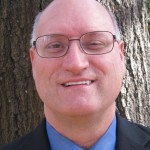Recent Wake Vortex Research at NASA Langley
Fred Proctor
Tuesday, October 7, 2014 at 2:00 P.M. in the H.J.E. Reid Auditorium
(video) within the Langley firewall only
Abstract
Wake vortices behind an aircraft may pose hazards to following aircraft such as roll-upsets, turbulence, engine flame-outs, and loss of control. Current standards for wake separation between aircraft on approach are conservatively based on aircraft type, to mitigate risks from unacceptable wake encounters. Growth and demand for air traffic services has led to a desire to introduce concepts to provide higher levels of throughput, while maintaining current levels of safety. Significant gains in throughput are possible by reducing aircraft separations. Changes in separation standards based on aircraft type are currently being implemented in the FAA’s Re-Categorization (ReCat)-I and in the near future for ReCat-II. Separations based on dynamic spacing are being researched for ReCat-III. For dynamic spacing concepts, wake separation depends on weather conditions, altitude, and the characteristics of the generating and following aircraft pairs. For example, shorter wake separations are allowable when the atmosphere is turbulent and wakes decay quickly.
This presentation will describe how wake vortices form and how their transport and decay are affected by weather conditions and by ground interactions. Also described will be recent NASA research on the characterization of wake vortex transport and decay; improved wake and weather sensing with Lidars; and recent field campaigns.
Speaker
 Fred. H. Proctor is an internationally-known expert in aircraft wake vortices and microburst windshear. He developed the Terminal Area Simulation System (TASS), a three-dimensional large-eddy simulation computer model, and over the past 30 years has used it in many applied research areas for NASA and other government agencies. He has been a key technical contributor to many noteworthy NASA programs, and has provided expert testimony at two National Transportation Safety Board public hearings: 1994 crash of a USAir DC-9 at Charlotte, NC, and the 2001 crash of an American Airlines Airbus 300 at JFK. He also served as a member of the FAA/Eurocontrol Airbus 380 wake spacing working group, which recommended in-trail spacing standards for aircraft following an Airbus 380. Dr. Proctor holds a Ph.D. in Meteorology from Texas A&M University (1982), and a B.S. in Meteorology from Florida State University (1973).
Fred. H. Proctor is an internationally-known expert in aircraft wake vortices and microburst windshear. He developed the Terminal Area Simulation System (TASS), a three-dimensional large-eddy simulation computer model, and over the past 30 years has used it in many applied research areas for NASA and other government agencies. He has been a key technical contributor to many noteworthy NASA programs, and has provided expert testimony at two National Transportation Safety Board public hearings: 1994 crash of a USAir DC-9 at Charlotte, NC, and the 2001 crash of an American Airlines Airbus 300 at JFK. He also served as a member of the FAA/Eurocontrol Airbus 380 wake spacing working group, which recommended in-trail spacing standards for aircraft following an Airbus 380. Dr. Proctor holds a Ph.D. in Meteorology from Texas A&M University (1982), and a B.S. in Meteorology from Florida State University (1973).
Gaudy Bezos-O’Connor is hosting our speaker this month.